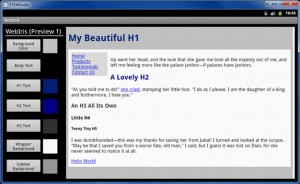August 23, 1991 is a day that would eventually change my life. It was on that day, 20 years ago, that the Super Nintendo Entertainment System (SNES)was launched in the United States. I didn’t get one until that Christmas, however, if the system hadn’t came to be, I wouldn’t have so many good memories.
I had good times with the system playing alone, but more importantly, I had a blast playing SNES with a lot of friends and family that I’ll never forget. Without a doubt, I probably spent more time with Jeremy Akers next to the SNES than anyone else. I’ll never forget the night we fought each other in Mortal Kombat 2 for 250 matches so we could unlock some character (either Smoke or Noob Saibot…who knows). It was a hoot. Jeremy also crashed at my house where we played Donkey Kong Country for several days when Christmas break was greatly lengthened by a big snow storm. We played other games together too, but those two stand out in my mind more than any others.
My uncle Duck’s boys and I had a ton of fun huddled around an SNES. The week the SNES came out, Duck picked one up for his boys. They invited me down a few days later where I actually got my first look at the SNES. James and Tim had beaten the first couple areas and had just unlocked the Top Secret Area. I remember going into the first ghost house and Tim says, very seriously, “He is so not ready for the ghost house…” He was right, but I did learn to fly in there. (I remember we eventually took a break to let Daniel play Ultraman so he wouldn’t tell on us and we’d have to quit!) For the next 3 Thanksgivings, we all sat in Granny’s back room in front of an 11″ TV and played the game du’jour. One year, it was Mortal Kombat (which we beat) and another year it was NBA Live ’94. We teamed up and beat a 48 game season to win the championship!
I can’t forget the summer my cousin Jennifer spent a lot of time at the house and we played Super Mario World like it was going out of style. One episode I remember vividly is when Jenn got all worked up over Star Road and swore several rather nasty oaths. My mom heard and made that noise she makes when she hears cursing. When mom walked off, we cracked up laughing.
The game I’ve probably played most in my life is The Legend of Zelda: A Link to the Past. I love that game! I spent hours and hours hulled up in my room navigating Hyrule all by myself. I’ve probably beaten it from start to finish at least 10 times. (Thanks to my horrible spatial memory, its almost like a new experience each time. I know what’s in the game, but I usually have to wander around a bit to find everything. It’s the only advantage of being so forgetful.) The other game I probably played the most was Ken Griffey Junior Baseball. To this day, it is the funnest arcade-style baseball game I’ve ever played!
In case you can’t tell, I don’t think any other system will ever hold such a dear place in my heart. Happy 20th Birthday SNES!
